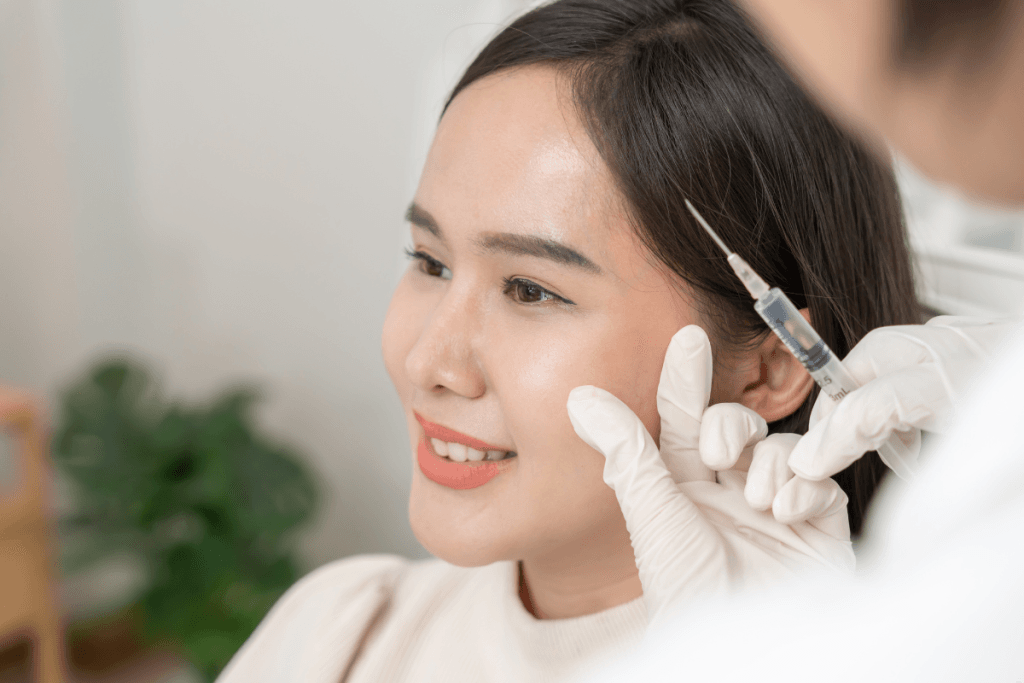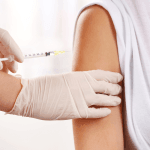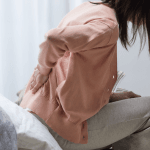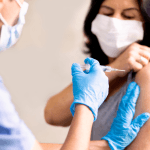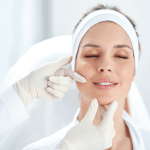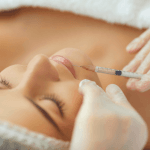Skin aging is an inevitable biological process that is accelerated by environmental stressors, lifestyle factors, and intrinsic cellular changes. According to dermatological research, collagen production decreases by approximately 1% annually after the age of 20, contributing to the development of fine lines, loss of elasticity, and overall dullness. As aesthetic medicine advances, treatments now focus on cellular repair in addition to symptomatic improvement.
One of the most innovative solutions in this field is the Rejuran skin booster, a therapy derived from polynucleotides (PN) designed to repair damaged skin at the cellular level. For medical practitioners, understanding the science, patient indications, and therapeutic outcomes of this product is essential for delivering optimal skin rejuvenation strategies.
What is Rejuran?
Rejuran is a South Korean innovation in regenerative aesthetics, formulated with polynucleotides (PN) biocompatible DNA fragments extracted from salmon. These molecules closely resemble human DNA, making them safe and effective in stimulating fibroblast activity, promoting extracellular matrix (ECM) remodeling, and enhancing tissue healing. Unlike hyaluronic acid fillers that primarily add hydration and volume, Rejuran directly addresses the underlying biological processes of skin aging, such as cellular damage, collagen depletion, and impaired repair mechanisms.
For medical practitioners, the Rejuran skin booster represents more than a cosmetic intervention; it is a therapeutic tool in regenerative dermatology. By improving skin thickness, elasticity, and barrier function, it supports both aesthetic outcomes and overall dermal health.
Clinical studies highlight its effectiveness in managing photoaging, acne scars, and dull, fatigued skin, making it versatile for a wide range of patients. With its ability to restore skin integrity from within, Rejuran positions itself as a cornerstone therapy for practitioners who aim to combine beauty enhancement with long-term tissue regeneration.
Mechanism of Action: Cellular Repair and Regeneration
The therapeutic strength of the Rejuran booster injection lies in its biologically active component: polynucleotides (PN), long-chain DNA fragments extracted from salmon. These molecules are highly biocompatible with human tissues, allowing them to integrate into the dermis without triggering immune rejection.
Unlike hyaluronic acid (HA) fillers, which provide structural volume and hydration, PN actively stimulates regenerative processes at the cellular and molecular levels. This makes Rejuran unique as both an aesthetic and therapeutic tool.
- Anti-inflammatory effects: Polynucleotides exhibit potent anti-inflammatory properties by reducing the release of pro-inflammatory cytokines and scavenging free radicals.
- Tissue remodeling: Once delivered into the dermis, PN activates fibroblasts, the key cells responsible for the synthesis of collagen and elastin. Over time, this activity enhances the extracellular matrix, leading to thicker, more elastic skin.
- Microcirculation improvement: Clinical and histological observations suggest that Rejuran enhances angiogenesis, the process by which new blood vessels form. Improved microcirculation leads to better oxygenation and nutrient delivery to dermal tissues, resulting in healthier, more radiant skin.
- DNA repair: At a deeper level, PN supports DNA repair pathways by stabilizing cell membranes and protecting dermal cells against oxidative stress and UV-induced damage. This function is crucial in slowing down photoaging, a significant contributor to wrinkles, pigmentation, and overall skin deterioration.
Together, these effects create a multi-layered regenerative mechanism. At the same time, HA fillers act like “cosmetic scaffolding,” providing hydration and temporary volume. Rejuran works as a biological healer, restoring skin integrity from within. This unique action profile positions Rejuran as a cornerstone in regenerative aesthetics, offering practitioners a treatment that not only improves cosmetic appearance but also enhances the skin’s intrinsic health.
Clinical Indications for Treatment
Medical practitioners often consider Rejuran treatment for patients who present with:
- Early to moderate signs of aging (fine lines, wrinkles, reduced elasticity).
- Skin compromised by UV damage, acne scars, or enlarged pores.
- Dull or uneven skin tone unresponsive to conventional moisturizers.
- Patients seeking preventive therapy for anti-aging.
Treatment Protocols and Administration
Rejuran is also well-suited for Asian skin types, where sensitivity and pigmentation tendencies often complicate other aesthetic procedures.
Mode of Delivery
- Administered intradermally, targeting the mid-to-deep dermis.
- Commonly delivered via micro-needling devices or multi-needle injectors for even distribution.
- Manual micro-injections can be used for localized areas, such as acne scars or fine lines around the eyes.
Treatment Schedule
- Initial protocol: 4 sessions spaced 2–4 weeks apart to build regenerative effects.
- Maintenance: every 6–12 months, depending on patient age, skin condition, and treatment goals.
Pain Control
- Topical anesthetics are typically sufficient.
- Cooling devices or additional numbing injections can be used for patients who are sensitive to pain.
Downtime and Recovery
- Minimal downtime, with most patients experiencing:
- Transient redness (erythema)
- Mild swelling or edema
- Occasional pinpoint bruising
- Side effects typically resolve within 1 to 3 days.
Rejuran Injection Technique Considerations
- Correct injection depth is crucial to prevent papules, nodules, or uneven product distribution.
- Uniform spacing ensures consistent results across the treated area.
- Gentle post-procedure care supports optimal healing and patient comfort.
Comparing Rejuran with Other Therapies
Practitioners often compare Rejuran Healer to hyaluronic acid skin boosters. While HA primarily addresses hydration, Rejuran works at a cellular level to enhance long-term tissue repair. In combination, HA and Rejuran may provide synergistic benefits: hydration from HA and regenerative effects from PN. This dual approach is especially beneficial for patients with both textural issues and hydration loss.
Patient Outcomes: Before and After
Clinical studies and real-world practice consistently show improvements in elasticity, texture, and pigmentation after Rejuran therapy. Rejuran before and after comparisons highlight:
- Brighter and more even skin tone.
- Reduced fine lines and pore size.
- Enhanced elasticity with visible tightening.
- Gradual but sustained improvement over several weeks.
This subtle, natural outcome aligns with patient preferences for “untouched” aesthetics rather than overtly altered appearances.
Longevity of Results: How Long Does Rejuran Last?
On average, results last between six months and one year, depending on factors such as age, skin condition, and lifestyle. The question of how long Rejuran lasts is best addressed by explaining that its regenerative effects are cumulative. Maintenance sessions allow results to persist, and patients who adhere to regular therapy cycles see more pronounced benefits over time.
Product Variations: Beyond the Classic Rejuran
The Rejuran skin booster injection has become the foundation of regenerative skin therapy, but its clinical versatility is further enhanced by product variations designed to target specific patient needs. Each formulation carries the same polynucleotide (PN) backbone yet differs in concentration, viscosity, or additional active components, allowing practitioners to tailor interventions for precise indications.
Rejuran Healer: The flagship formulation, widely recognized as the core regenerative therapy. It improves overall skin quality by boosting fibroblast activity, repairing dermal microdamage, and restoring elasticity. Practitioners often recommend it for patients presenting with early aging, uneven tone, or generalized skin fatigue.
Rejuran® I: Specially developed for the delicate periorbital region, where the skin is thin and sensitive. With a lighter viscosity, it integrates smoothly without causing lumpiness, addressing fine lines, early wrinkles, and under-eye hollows. Its gentle formulation makes it suitable for patients who may not tolerate standard fillers in this fragile area.
Rejuran HB: Combines polynucleotides with hyaluronic acid (HA), delivering a twofold benefit: cellular repair from PN and deep hydration from HA. This hybrid approach is efficient in patients with severely dehydrated or photoaged skin, providing both immediate plumping and long-term structural repair.
Rejuran Healing Essence: Represents the topical maintenance line, designed for at-home use to prolong in-clinic results. While not a replacement for injectable therapies, it reinforces dermal healing between sessions and supports barrier function, making it valuable for compliance and long-term skin health.
By offering these tailored formulations, practitioners can individualize Rejuran treatment protocols based on age, skin condition, and specific concerns. This modularity positions Rejuran not just as a single product, but as a comprehensive skin renewal system adaptable to a broad spectrum of patients.
Practical Considerations: Cost and Accessibility
From a clinical perspective, cost often plays a role in patient decision-making. The Rejuran price varies depending on the formulation and region, with complete treatment courses being more expensive than standard HA boosters. However, patients increasingly recognize the long-term value of regenerative therapies.
Clinics offering structured packages or loyalty programs may encourage compliance and sustained outcomes. Practitioners considering to buy Rejuran should source it only from licensed distributors to ensure product authenticity and patient safety.
Conclusion
The Rejuran booster represents a paradigm shift in aesthetic medicine, focusing on regeneration rather than superficial correction. For medical practitioners, it provides an advanced tool to support skin healing, repair UV damage, and improve texture with natural, lasting results. By integrating Rejuran into clinical practice, physicians can offer patients a scientifically backed, versatile therapy that bridges the gap between cosmetic dermatology and regenerative medicine.
Frequently Asked Questions (FAQs)
What is the downtime after a treatment?
Most patients experience mild redness and swelling for 1–3 days, which subsides quickly with proper aftercare. Makeup can usually be applied after 24 hours.
Can Rejuran be combined with other aesthetic treatments?
Yes, Rejuran is often used in conjunction with HA fillers, laser resurfacing, or chemical peels. This combined approach enhances both hydration and regeneration.
Is Rejuran safe for all skin types?
Rejuran has an excellent safety profile and is biocompatible. However, practitioners should exercise caution in patients with active infections, allergies, or autoimmune conditions.
How many sessions are required for visible results?
Most patients notice improvements after two to three sessions, but a full course of four treatments is recommended for optimal results.
How does Rejuran differ from PRP (Platelet-Rich Plasma)?
While both therapies stimulate regeneration, PRP relies on patient-derived growth factors, whereas Rejuran uses salmon-derived polynucleotides. Rejuran provides more consistent outcomes due to standardized concentrations.


